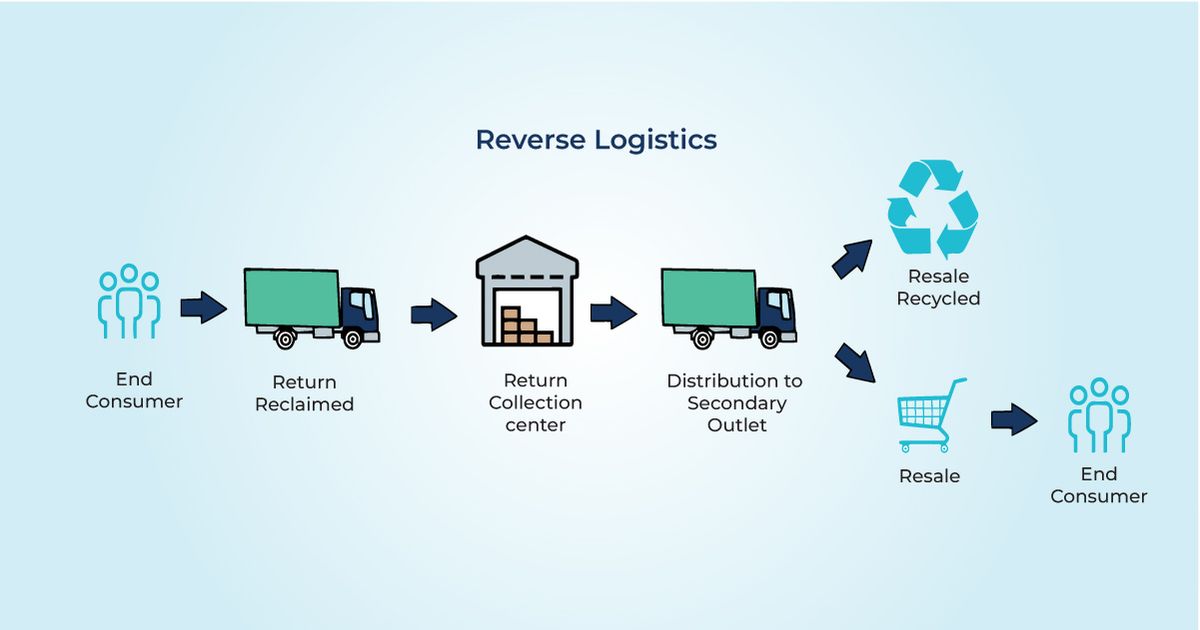Image Source: Google
In today's business landscape, the concept of reverse logistics plays a critical role in the sustainability and efficiency of supply chains. With the rise of the circular economy model, where products and materials are kept in use for as long as possible through recycling, refurbishing, and reusing, companies are now focusing on optimizing their reverse logistics processes. Navigating this complex world requires a strategic approach to effectively manage returns, remanufacturing, and recycling. In this article, we will explore key strategies for success in reverse logistics within a circular economy framework.
The Importance of Reverse Logistics
Reverse logistics refers to the process of moving goods from their final destination back to the manufacturer or reseller for the purpose of returns, repair, remanufacturing, recycling, or disposal. It involves handling products that have reached the end of their life cycle or need to be repurposed for various reasons. Here are some reasons why reverse logistics is crucial in today's business environment:
- Minimizes waste and environmental impact by facilitating the reuse and recycling of products
- Enhances customer satisfaction by providing efficient returns and exchanges processes
- Reduces costs through the recovery of value from returned products
- Supports sustainability goals and promotes a circular economy model
Strategies for Success in Reverse Logistics
1. Implement Efficient Returns Management Processes
One of the key challenges in reverse logistics is managing returns effectively. To streamline the returns process and enhance customer satisfaction, companies can implement the following strategies:
- Provide clear return policies and instructions for customers
- Utilize technology such as barcode scanning and RFID to track returned items
- Establish a dedicated returns management team to handle reverse logistics efficiently
- Offer multiple return options such as in-store returns, drop-off locations, or mail-in returns
2. Optimize Remanufacturing and Refurbishing Processes
Remanufacturing and refurbishing involve restoring used products to like-new condition, extending their life cycle and reducing the need for new materials. To optimize these processes, companies can consider the following strategies:
- Invest in advanced remanufacturing technologies and equipment
- Collaborate with suppliers and partners to source high-quality components for remanufactured products
- Implement quality control measures to ensure remanufactured products meet the same standards as new ones
- Offer incentives for customers to return used products for remanufacturing or refurbishing
3. Enhance Recycling and Disposal Practices
Recycling and disposal are essential components of reverse logistics, especially in a circular economy where resources are kept in circulation. To improve recycling and disposal practices, companies can adopt the following strategies:
- Partner with certified recycling facilities to ensure proper disposal of products
- Design products for easy disassembly and material separation to facilitate recycling
- Promote recycling initiatives and educate customers on the importance of recycling old products
- Comply with environmental regulations and industry standards for responsible disposal of products
The Future of Reverse Logistics in a Circular Economy
As companies strive to build sustainable and resilient supply chains, reverse logistics will continue to play a vital role in achieving these goals. By implementing innovative strategies for managing returns, remanufacturing, and recycling, businesses can not only reduce costs and minimize waste but also contribute to a more circular economy where resources are used efficiently and responsibly. Navigating the world of reverse logistics requires a forward-thinking approach and a commitment to environmental stewardship. By embracing the principles of the circular economy, companies can pave the way for a more sustainable future.

